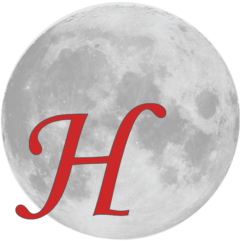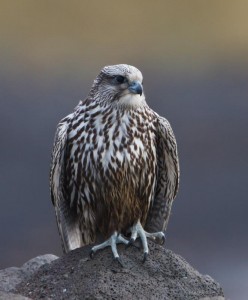
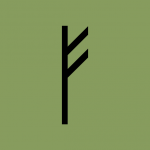
Frejya’s representation throughout the lifecycle suggests an affinity with the sun, which defines the cycle of the year. Her association with both the winter and the summer solstices reaffirm this connection, as does the Yule fire and the summer bonfires. Frejya’s amber necklace represents her command over the sun and hence the passage of time. Those who see Frejya as blond may be focusing on her sun aspect, perhaps dazzled by the brightness of her nimbus. It is interesting in this regard that the Egyptian sun god Horus also takes the form of a falcon.Although Frejya is a goddess for all seasons and all ages, I want to explore Frejya’s death aspect more closely. I will do so in a later installment of this series.
Month: March 2013
Frejya’s Three Forms
March 22, 2013So what does boar, fir and falcon say about Frejya?Let’s look first at the falcon. Freya’s falcon is probably the Gyrfalcon (JER-falcon), the largest falcon, who likes the northern climates. If she migrates at all, she is driven by scarcity of food, and she will sometimes winter at sea over ice. The Gyrfalcon is the preferred falcon for hunting. She mostly hunts birds, including other raptors, although she will also take small mammals. Other predatory birds leave her alone, as she is fierce. She has a varied hunting strategy and is considered very intelligent. The goddess Frejya has a cloak of falcon feathers reaching to the ground. With her characteristic generosity she loans this cloak to the other gods when they need it to move quickly. Falcons in general are associated with the sun or with death. Other important falcon deities include Circe, the witch who trapped Odysseus and changed his sailors into pigs, and Horus, the Egyptian sun god who avenged the death of his father Osiris and performed an important funerary rite for him.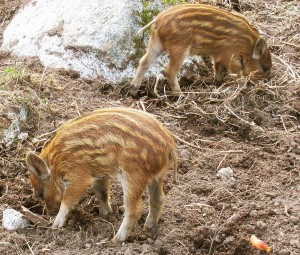
The Fir and Falcon
March 16, 2013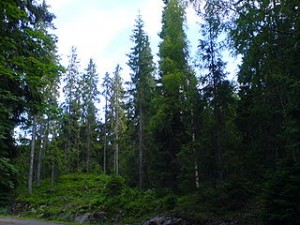
The Magic Comb: A new post at Return to Mago
March 15, 2013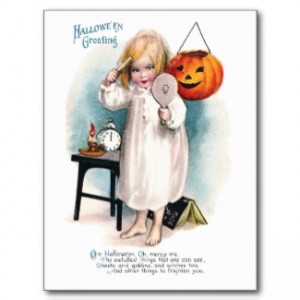 I have written an article on the comb as a shamanic tool at the Return to Mago blog.
I have written an article on the comb as a shamanic tool at the Return to Mago blog.
Eostre and the Egg
March 8, 2013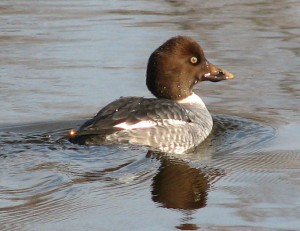
From one half the egg, the lower,Grows the nether vault of Terra:From the upper half remaining,Grows the upper vault of Heaven;From the white part come the moonbeams,From the yellow part the sunshine,From the motley part the starlight,From the dark part grows the cloudage;And the days speed onward swiftly….
Spurred by the lengthening days at the spring equinox, birds begin to lay their eggs, and egg gathering forms the basis for many spring rites. The custom of dying and decorating chicken eggs probably began as a way of mimicking the many colors and designs of wild bird eggs that were once gathered in the spring hunts.In the Netherlands to this day there are spring hunts for the eggs of the wild Lapwing, who makes her nest on the ground. Bird nests probably formed the inspiration for basket weaving, and perhaps before this innovation people gathered their eggs in nests.Another animal who nests in the tall grass in the early spring is the European Brown Hare, who makes a rudimentary nest or “form” for each of her babies. This is where we get the idea that the “Easter Bunny” is hiding eggs. The hare is also linked with the moon, itself shaped like an egg, because the outline of a hare holding an egg can be seen on the moon’s surface.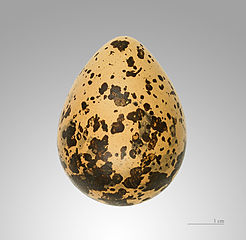
Eosturmonath has a name which is now translated “Paschal month” and which was once called after a goddess of theirs named Eostre, in whose honour feasts were celebrated in that month. Now they designate that Paschal season by her name, calling the joys of the new rite by the time-honoured name of the old observance.
So we have a spring folk custom of a bunny who hides eggs or treats, baskets lined with goodies and fake grass, and organized hunts for colorful eggs, all associated with an old Germanic (Anglo-Saxon) holiday. Moreover, spring hare folklore can be traced to Germany and egg hunts to the (Germanic) Netherlands, among other places. It certainly looks like a traditional Pagan holiday, barring direct evidence to disabuse us of this assumption. Surprisingly, there are many Christians, historians, and even Pagans who have taken on the mission of disabusing us of the notion of Easter as a Pagan holiday.Part of this hinges on the fact that Bede does not mention hares or eggs in connection with Easter. These can therefore be assumed, if desired, to be of recent origin. It always makes sense to our detractors to assume recent origin for customs embraced by modern Pagans, even in the face of contradictory evidence. The bar for acceptability of evidence can be made extremely high, or, failing that, evidence can be simply ignored with ignorance forming the justification for saying “no evidence exists.”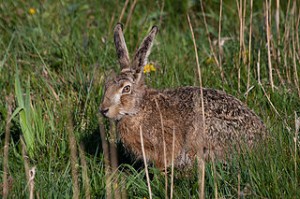
Hosking, Rebecca. “The Lapwing – the unsung hero of Easter and farmland icon” Permaculture Inspiration for Sustainable Living, April, 2011.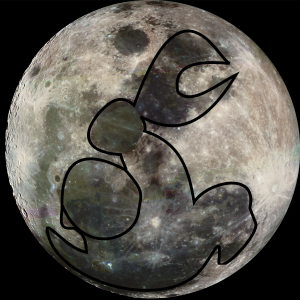 Hunt-Anschütz, A.E. Eostre and Easter Customs. Association of Polytheist Traditions, 2006. Note: I got my quote from Bede from this article. In some ways this article illustrates the type of poor Pagan scholarship I’m talking about. For example, pre-Christian hare associations are legion, and others have traced the introduction of hares into Christianity from Celtic pagan practices (see Hare by Simon Carnell). Do an exhuastive study before stating “there is no reason to believe.” Also, stating “the symbolism surrounding” an item “fits into” Christianity begs the question. Find out how and why something without Biblical associations was “fitted into” Christian practices. In fairness, the author does concede that it’s implausible to say St. Bede was making up goddesses.
Hunt-Anschütz, A.E. Eostre and Easter Customs. Association of Polytheist Traditions, 2006. Note: I got my quote from Bede from this article. In some ways this article illustrates the type of poor Pagan scholarship I’m talking about. For example, pre-Christian hare associations are legion, and others have traced the introduction of hares into Christianity from Celtic pagan practices (see Hare by Simon Carnell). Do an exhuastive study before stating “there is no reason to believe.” Also, stating “the symbolism surrounding” an item “fits into” Christianity begs the question. Find out how and why something without Biblical associations was “fitted into” Christian practices. In fairness, the author does concede that it’s implausible to say St. Bede was making up goddesses.
WITCHCRAFT IN EUROPE 400-1700: A documentary history, 2nd edition (Review)
March 1, 2013 Edited by Alan Charles Kors and Edward Peters (University of Pennsylvania, 2001)Much of the information available to pagans about the witch persecutions of European origin is biased and distorted, if not downright inaccurate. This is even (or especially) true of information from academic sources, which often have a strong antifeminist bias as well as a fear of appearing to validate twenty-first century pagan notions. Reviewing source material can cut through a lot of this prejudice and misinformation to give a more accurate understanding of the prejudice and misinformation that sparked the witch hunts.Witchcraft in Europe is a collection of sixty-nine texts tracing the evolution of Christian belief about witchcraft. Included are theological writings, excerpts from witch trials, personal accounts by witch hunters, and essays by clerics and non-clerics questioning the validity of witch persecutions. Of particular value are the forty-one illustrations that reflect the understanding of artists of the period about witchcraft.By looking at documents such as these we are by definition getting a biased account. These men (they are all men) were of similar religion, social class, and education, whatever their beliefs on the witchcraft question, and they themselves were limited in access to accurate data. Still, a look at their thought processes, understanding of the world, and personal motivations reveals a great deal about how the persecutions originated and provides a few insights as to why the fear of witchcraft grew to such monstrous proportions.The original edition of this book concentrated on the twelfth to the seventeenth centuries, and most books about the witch persecutions focus on a narrower period than this, coinciding with the most intense trial activity. The editors decided that a longer view was necessary in gaining an accurate understanding of the development and evolution of beliefs about witchcraft. The longer historical period in itself makes this book superior to most others, although an understanding of history regarding paganism and witchcraft before and after this timeframe is also important.There is an introduction to each of the texts giving a background of the author along with a summary of his other work, which is very helpful. There is also a forty page introduction, which has some biases. Read the rest of the book and form your own conclusions.I have had this book on my shelf for years and have read many sections numerous times, but it was not until this year that I actually read the whole 400+ pages in order from start to finish. I have to admit it was painful, alternately tedious and infuriating, but in the end worth the effort.
Edited by Alan Charles Kors and Edward Peters (University of Pennsylvania, 2001)Much of the information available to pagans about the witch persecutions of European origin is biased and distorted, if not downright inaccurate. This is even (or especially) true of information from academic sources, which often have a strong antifeminist bias as well as a fear of appearing to validate twenty-first century pagan notions. Reviewing source material can cut through a lot of this prejudice and misinformation to give a more accurate understanding of the prejudice and misinformation that sparked the witch hunts.Witchcraft in Europe is a collection of sixty-nine texts tracing the evolution of Christian belief about witchcraft. Included are theological writings, excerpts from witch trials, personal accounts by witch hunters, and essays by clerics and non-clerics questioning the validity of witch persecutions. Of particular value are the forty-one illustrations that reflect the understanding of artists of the period about witchcraft.By looking at documents such as these we are by definition getting a biased account. These men (they are all men) were of similar religion, social class, and education, whatever their beliefs on the witchcraft question, and they themselves were limited in access to accurate data. Still, a look at their thought processes, understanding of the world, and personal motivations reveals a great deal about how the persecutions originated and provides a few insights as to why the fear of witchcraft grew to such monstrous proportions.The original edition of this book concentrated on the twelfth to the seventeenth centuries, and most books about the witch persecutions focus on a narrower period than this, coinciding with the most intense trial activity. The editors decided that a longer view was necessary in gaining an accurate understanding of the development and evolution of beliefs about witchcraft. The longer historical period in itself makes this book superior to most others, although an understanding of history regarding paganism and witchcraft before and after this timeframe is also important.There is an introduction to each of the texts giving a background of the author along with a summary of his other work, which is very helpful. There is also a forty page introduction, which has some biases. Read the rest of the book and form your own conclusions.I have had this book on my shelf for years and have read many sections numerous times, but it was not until this year that I actually read the whole 400+ pages in order from start to finish. I have to admit it was painful, alternately tedious and infuriating, but in the end worth the effort.
